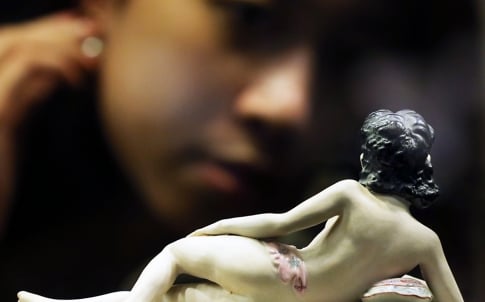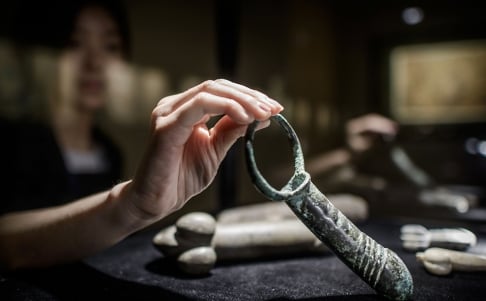Art & Exhibitions
Rediscovering the Past of Erotic Art in China


A new exhibition at Sotheby’s Hong Kong revisits China’s forgotten erotic art and sexual philosophy, reports Agence France-Presse (AFP). “Gardens of Pleasure: Sex in Ancient China,” on view through May 3, includes more than 100 works from as far back as the the Han dynasty (206 B.C.–220 A.D.) to the more recent Qing dynasty (1644–1911). Though viewers may giggle, the sexual imagery offers a rare, enlightening glimpse into how sex was perceived in ancient China.
The show draws from the collection of Dutch art collector Ferdinand Bertholet, amassed since the 1970s. Among the artworks featured, none of which are for sale, are stone, ceramic, and bronze phalluses, and paintings and porcelain sculptures of Chinese couples having sex. Though it may sound pornographic, such art was meant to represent harmony in Taoist philosophy, which saw sex as a means to achieve happiness and longevity.

A phallus in the exhibition “Gardens of Pleasure: Sex in Ancient China” in Sotheby’s Hong Kong. Photo: courtesy Agence France-Presse.
Unfortunately, that school of thought was largely wiped out during Mao Zedong’s Cultural Revolution (1966–76), along with the destruction of countless relics, artworks, and buildings. At the height of Communist rule, clothing was gender-neutral, and all sexual expression was repressed.
Despite growing affluence and a less sexually conservative younger generation, China still maintains strict pornography laws, and holding such an exhibition on the mainland would likely not have been possible, Sotheby’s Hong Kong CEO Kevin Ching told AFP.
In an interview with AFP, Betholet expressed his hope that the exhibition would help China “recognize the philosophy of their own past,” although such issues remain “incredibly sensitive.” Categorizing such ancient works as pornography, he argues, would be a failure by the Chinese to accept their own history.
“This is probably the first time we’ve held an exhibition of Chinese erotic art of this quality and variety in Hong Kong,” Ching said. Betholet’s collection is thought to be the largest of its kind.